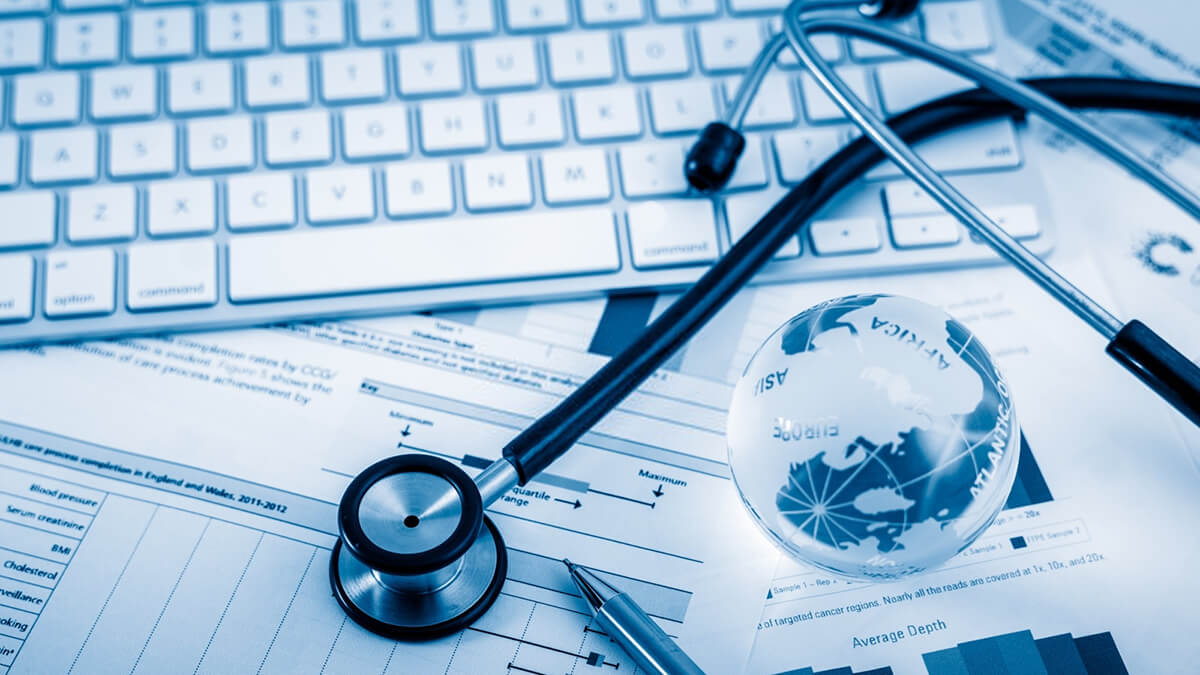Recognizing the Key Functions and Obligations in Medical Administration
Recognizing the Key Functions and Obligations in Medical Administration
Blog Article
Ideal Practices in Medical Management for Improving Efficiency and Reducing Prices
In the ever-evolving landscape of health care, the search of finest practices in clinical management is paramount for improving performance and suppressing expenses. By integrating sophisticated modern technologies such as electronic health records and telemedicine, health care providers can improve procedures and improve client treatment.
Leveraging Advanced Modern Technology
The assimilation of digital remedies into healthcare systems has actually changed the method facilities run, enhancing procedures and enhancing patient treatment. By streamlining patient details, EHRs eliminate the requirement for cumbersome documentation and assist in seamless interaction among healthcare carriers.
Telemedicine is one more technical development that has actually reinvented client communication. It provides ease for both people and health care specialists by making it possible for remote examinations, which can decrease the demand for in-person check outs and maximize visit organizing. Furthermore, telehealth systems can extend medical care access to country or underserved locations, connecting voids in care shipment.
In addition, using Artificial Knowledge (AI) and machine discovering is becoming significantly prevalent in predictive analytics, permitting for very early discovery of potential health and wellness concerns and more enlightened decision-making. These technologies, when integrated successfully, can boost diagnostic accuracy and customize person treatment plans, eventually bring about enhanced healthcare outcomes and operational effectiveness.
Optimizing Source Allotment
By purposefully handling sources such as workers, devices, and finances, healthcare centers can substantially improve their operational efficiency, enhance client results, and lower unnecessary expenditures. The initial action in optimizing source allotment entails carrying out a comprehensive analysis of present assets and recognizing locations where resources may be underutilized or exhausted.
Focusing on resource appropriation based on client demands and service demands is essential. This includes aligning sources with high-demand areas, such as emergency treatment or specialized treatments, to ensure timely and reliable person care. Applying versatile staffing versions can also enhance labor sources by changing employees allotment in feedback to varying person volumes. In addition, embracing telemedicine and other technical solutions can relieve physical resource constraints by offering alternate avenues for patient-provider interactions.
Funds should be carefully checked and designated with calculated insight to support both short-term functional requirements and long-lasting institutional objectives. This consists of investing in training programs that boost staff expertises and adopting energy-efficient methods that minimize operational expenses (medical administration). Inevitably, a maximized source appropriation strategy fosters a sustainable healthcare environment that is receptive, reliable, and monetarily sensible
Streamlining Operations Procedures
When health care facilities objective to enhance operational performance, enhancing process procedures comes to be a crucial focus. Efficient operations decrease redundancy, get rid of unnecessary steps, and enhance control amongst healthcare specialists. This technique not only increases solution distribution yet likewise enhances the quality of person treatment.

Following, technology combination plays a considerable duty in improving operations. Implementing digital health records (EHRs) and digital physician order entry (CPOE) systems minimizes documentation, minimizes human error, and makes sure details comes to all pertinent personnel. Additionally, leveraging telemedicine platforms can simplify person assessments and follow-ups, reducing the view stress on physical facilities.

Eventually, structured workflows cause set you back reductions and boosted person satisfaction, fostering a much more sustainable health care setting.
Enhancing Information Management
Building upon streamlined process, maximizing data monitoring becomes an important component beforehand healthcare administration. Effective information monitoring systems are important for preserving precise patient records, improving decision-making, and ensuring compliance with regulative requirements. By applying robust data monitoring solutions, health care facilities can improve the top quality of individual treatment while simultaneously decreasing operational expenses.
One secret element of enhancing information administration is the integration of innovative digital health and wellness record (EHR) systems. These systems assist in the seamless exchange of patient information across various departments, reducing duplication of tests and decreasing errors. A properly designed EHR system supports data analytics, making it possible for doctor to determine trends and make educated decisions concerning person care.
Additionally, protecting patient data is critical. Embracing detailed cybersecurity actions, consisting of encryption and regular audits, ensures the integrity and confidentiality of delicate details. This not just secures clients however likewise preserves the organization's reputation.
Investing in personnel training is another essential factor. Enlightening medical care professionals on data management practices improves their capability to efficiently utilize technology, leading to improved individual end results. To conclude, enhancing information administration via advanced innovation and thorough training is essential for accomplishing effectiveness and expense reduction in medical management.
Fostering Collaborative Communication
A vital element beforehand clinical management is cultivating collective interaction among medical care specialists. Effective communication is critical for making certain seamless patient treatment, optimizing treatment outcomes, and lessening errors. By urging open dialogue and sychronisation across multidisciplinary teams, medical care organizations can improve their functional efficiency and minimize unnecessary costs.
Central to this approach is the integration of interaction innovations such as digital wellness records (EHRs) and safe and secure messaging systems, which help with the rapid exchange of important patient details. These devices allow doctor to accessibility and share information in genuine time, ensuring that all team members are informed and straightened in their decision-making processes. Normal team meetings and interdisciplinary rounds can better promote a culture of cooperation and accountability.
Educating programs focused on enhancing interaction abilities are likewise vital. These programs can assist personnel create the capacity to communicate information plainly and pay attention proactively, therefore lowering misconceptions and promoting an encouraging job atmosphere. Furthermore, embracing standardized interaction procedures, such as SBAR (Circumstance, History, Analysis, Recommendation), can improve the exchange of information, making sure that critical information are communicated succinctly and effectively. Eventually, cultivating collaborative interaction leads to improved medical care visit their website delivery and expense financial savings (medical administration).

Conclusion
Integrating innovative innovation, such as electronic health documents and telemedicine, together with maximized source appropriation and streamlined workflow processes, is important for improving performance in medical management. Efficient information monitoring and promoting joint communication amongst medical care teams are important for minimizing redundancies and improving care high quality. By prioritizing precautionary treatment and taking part in high quality enhancement initiatives, healthcare organizations can accomplish significant cost savings and boosted person end results, thus ensuring lasting healthcare distribution in an increasingly intricate atmosphere.
Report this page